A spinal cord injury refers to damage to the motor and sensory function of the spinal cord or the nerves connected to it. Also referred to as an SCI, this type of injury is typically the result of sudden trauma or a degenerative condition and can ultimately cause paralysis. In the event that an accident occurs, there are several symptoms that may indicate an individual has sustained a spinal cord injury:
- Inability to move
- Spasticity
- Loss of Sensation
- Loss of bladder or bowel control
- Intense back pain
- Trouble coughing or breathing
Diagnosis
A spinal cord injury is classified into two categories to help determine the severity – complete and incomplete. A complete spinal cord injury indicates that the survivor has lost all feeling and movement below the injury location. An incomplete spinal cord injury indicates that partial feeling and movement remains below the point of injury. Furthermore, spinal cord injuries can also be categorized as:
- Quadriplegia – Also referred to as tetraplegia, this indicates the injured individual is paralyzed from the neck down.
- Paraplegia – Paralysis that affects all or part of the trunk, legs and pelvic organs.
Determined by the lowest vertebrae affected, the level of injury is also an important factor in diagnosing the severity of a spinal cord injury. Below are the effects of a spinal cord injury according to the point of injury:
- C1 – C4: Loss of involuntary functions such as the ability to breathe.
- C5: Control of shoulders and biceps, but wrist and hand will not function.
- C6: Wrist function typically remains, but no function of the hand.
- C7 and T1: Individual can extend and straighten arms, but may have difficulty with hands and fingers.
- T1 – T8: Individual generally has hand function but will have difficulty with trunk control.
- T9 – T12: Individual has good trunk and abdominal function.
Secondary Conditions
As with any traumatic injury, you or your loved one will likely experience side effects during the acute and sub-acute phases of recovery. To best handle sudden, emergency situations that may arise, it is important to be aware of common secondary conditions.
Immediate Secondary Conditions
Deep vein thrombosis (DVT) – Also referred to as a pulmonary embolism, DVT occurs when there is a blockage in one or more arteries. This condition is common during the early phases of recovery, particularly in the lower legs. However, DVT is potentially fatal if it occurs in the thigh because a blood clot can become dislodged and travel to the lungs. Therapeutic treatment like compression socks and ace wrappings and the appropriate medication can help prevent DVT from occurring.
Pneumonia- Naturally, breathing is performed through a combined effort by the diaphragm, abdominals and chest wall muscles. However, in cases where the spinal cord injury affects the thorax, this function is altered and the diaphragm becomes the sole body structure that assists with breathing. This can often result in poor coughing and pneumonia. Although spinal cord injury survivors are highly susceptible to it during the acute phase, treatment like drainage, assisted coughing and abdominal binders can help with prevention.
Pressure sores- Pressure sores typically occur when an individual sits or lies in a certain position for too long. The affected area can become red, sore or even break. Position changes are a critical form of prevention.
Autonomic dysreflexia–Typically affecting those with an injury above the T5 vertebrae, this condition results in a sudden drastic increase in blood pressure. Autonomic dysreflexia is commonly caused by a full bladder and is considered a life threatening medical emergency. However, it can be successfully treated if the urinary tract is properly drained.
Neuropathic pain– Neuropathic pain is common among spinal cord injury survivors and can cause extremely sharp sudden pain. This condition can be treated with appropriate medication.
Hypotension– Shortly after a spinal cord injury, a survivor can experience low blood pressure while sitting or standing. Postural hypotension takes place when blood vessels don’t decrease in size after one’s blood pressure drops. Wearing elastic hose and abdominal support or gradually getting to a sitting or standing position can help prevent hypotension.
Urinary tract infection – Also referred to as a ‘UTI’, this happens when an individual’s kidneys or bladder becomes infected with bacteria. An SCI survivor can prevent a UTI from occurring by catheterizing frequently and increasing fluid intake.
Long Term Secondary Conditions
Bowel and bladder dysfunction– The nerves which control bowel and bladder function are almost always damaged after an individual has sustained a spinal cord injury. To help with regularity, many SCI survivors begin programs with enemas, for bowel function, and catheters, for bladder control.
Spasticity- The nerve cells located below the point of injury are disconnected from the brain when a spinal cord injury takes place. This can cause muscles spasms when these nerve areas stimulated. To reduce spasticity, spinal cord injury survivors are encouraged to perform daily range of motion exercises.
Contractures– This condition occurs when a body part is stiffened to the point of immobility. Range of motion exercises are an effective preventative measure.
Scoliosis – Scoliosis is particularly prevalent among children who have sustained spinal cord injuries. This condition causes an abnormal curve in the spine. It is important for children to be checked regularly for scoliosis until bones have completely matured.
Rehabilitation
Over the years, spinal cord injury rehabilitation has come a long way. Survivors are no longer limited to therapy that simply teaches them how to live from a wheel chair. If you, or a loved one, have experienced a spinal cord injury, the appropriate therapy programs can now help you reach the maximum recovery potential in order to participate in activities you enjoyed before the injury.
Physical therapy–This form of therapy focuses on strength, endurance, coordination and mobility through exercises programs.
Occupational therapy– Occupational therapy helps patients with the coordination of small muscles. Patients are taught to daily living activities like bathing and dressing.
Recreational therapy– This form of therapy develops patient’s physical abilities so that they can engage and participate in recreational and athletic activities.
Respiratory therapy– Typically intended for quadriplegics and high thoracic injuries, this form of therapy promotes breathing treatment exercises and teaches ventilator care.
Aquatic therapy– Aquatic therapy incorporates water to help restore and maintain a survivor’s physical ability.
Vocational rehabilitation– This form of rehabilitation assesses basic work skills in an effort to determine the type of job a patient can handle.
Life with an SCI
Although there is no cure for spinal cord injuries, there have been incredible medical advancements that allow survivors to lead successful lives. The prognosis differs for each survivor depending on the severity of the injury. However, there are several common long term effects that require lifestyle adjustments for many survivors.
Due to limited mobility, it can be difficult to maintain physical fitness after a spinal cord injury. As a result, muscle atrophy, a condition in which muscle tissues breakdown, is a common consequence. This condition often leads to significant weight loss. The sedentary lifestyle can also lead to consequences on the other end of the spectrum – such as obesity and diabetes. Fortunately, the preceding conditions can be avoided with the guidance of a nutritionist and a physical or occupational therapist.
Depending on the level of injury, sexuality can also be affected in various ways. Some spinal cord injury survivors may experience less sensation below the level of injury while some may notice increased sensation above the level of injury. Medical specialists can assist with any questions or issues a survivor may have concerning sexual health.
Although a spinal cord injury can be life altering, there are many forms of treatment that help individuals throughout recovery. With the appropriate care, many conditions or lifestyle changes can be managed and spinal cord injury survivors can live life to the fullest as independent members of society.
There are many resources available that offer guidance, support and education. We encourage you to look through the comprehensive resource guide below to help make the recovery process as smooth as possible.














